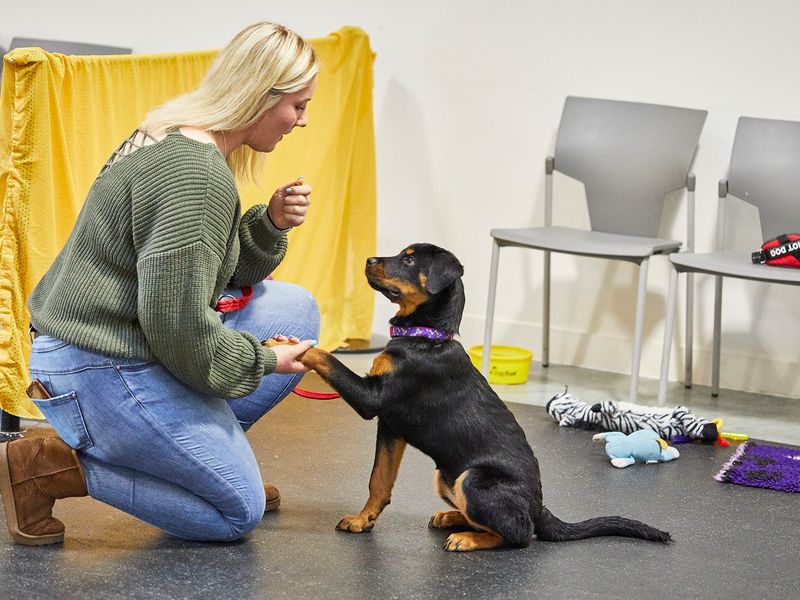C155C Chronicles
Exploring the latest trends and insights.
Puppy Training: A Tail of Trials and Triumphs
Unleash your puppy's potential! Discover tips, tricks, and heartwarming stories in our journey of training trials and triumphs.
Essential Commands Every Puppy Should Learn
Teaching your puppy essential commands is crucial for their safety and good behavior. Some of the most fundamental commands every puppy should learn include sit, stay, and come. These commands help establish basic obedience and ensure that your furry friend can respond appropriately in various situations. Here’s a brief overview of these commands:
- Sit: This command helps control your puppy’s behavior, especially in social settings.
- Stay: Teaching your puppy to stay in one place can prevent dangerous situations.
- Come: This command is essential for safety when you want your puppy to return to you.
In addition to these core commands, consider teaching your puppy down and leave it. The down command not only helps calm your puppy but also encourages patience. Meanwhile, the leave it command is vital for preventing your puppy from picking up anything harmful during walks or playtime. Consistency and positive reinforcement are key to successfully teaching these commands. Remember to keep training sessions short and fun, as this will help your puppy learn more effectively and strengthen your bond.

Common Puppy Training Mistakes and How to Avoid Them
Training a puppy can be a rewarding experience, but it's easy to fall into common puppy training mistakes that can hinder your progress. One of the most prevalent errors is inconsistency in command usage. When different family members use different commands for the same action, it confuses the puppy and slows down the learning process. To avoid this mistake, ensure that everyone in your household uses the same commands and maintains consistency in their tone and behavior. Consistency is key to effective training.
Another frequent mistake is underestimating the importance of socialization. Puppies need to be exposed to a variety of environments, people, and other animals to develop into well-adjusted adult dogs. Failing to provide adequate socialization can lead to fearfulness or aggression later on. To prevent this, make a conscious effort to introduce your puppy to different experiences, but do so at a comfortable pace. Remember, the goal is to create positive associations rather than overwhelming your puppy. Socialization is crucial for a balanced and happy pet.
How to Choose the Right Training Method for Your Puppy
Choosing the right training method for your puppy is crucial for fostering a happy and well-behaved companion. First, consider your puppy's age, breed, and temperament, as these factors can significantly influence their ability to learn. For instance, positive reinforcement techniques, such as treat rewards or praise, are often effective for most puppies, helping them associate good behavior with positive outcomes. Additionally, implementing a mix of training methods can provide a more rounded approach, ensuring your puppy remains engaged and eager to learn.
Furthermore, it’s essential to establish consistency in your training routine. Training your puppy requires patience and repetition. Create a schedule that includes short training sessions, as puppies tend to have shorter attention spans. As you formulate your plan, you might consider a few popular training methods:
- Clicker Training – Using a clicker to mark desired behaviors.
- Leash Training – Teaching your puppy to walk politely on a leash.
- Socialization – Exposing your puppy to different environments and other animals.
By combining these methods and adapting to your puppy’s unique needs, you can effectively shape their behavior and strengthen your bond.